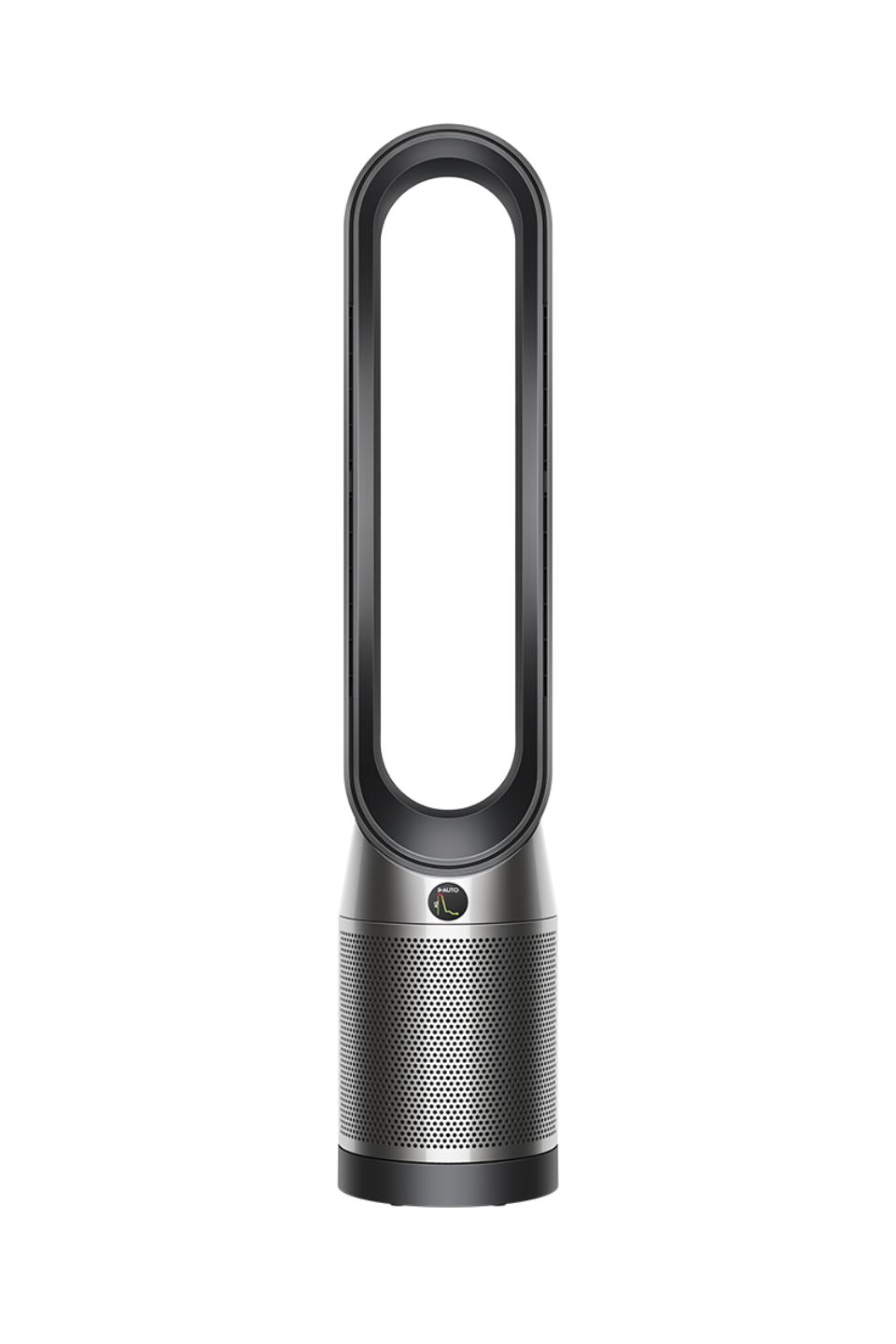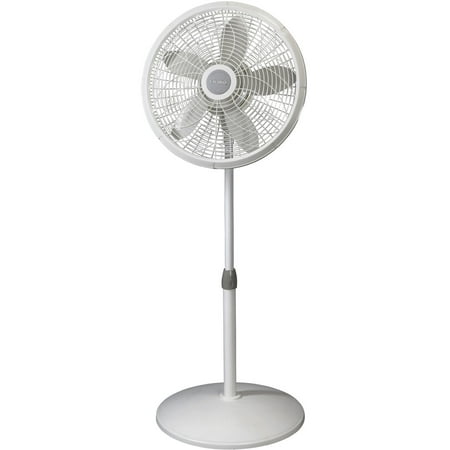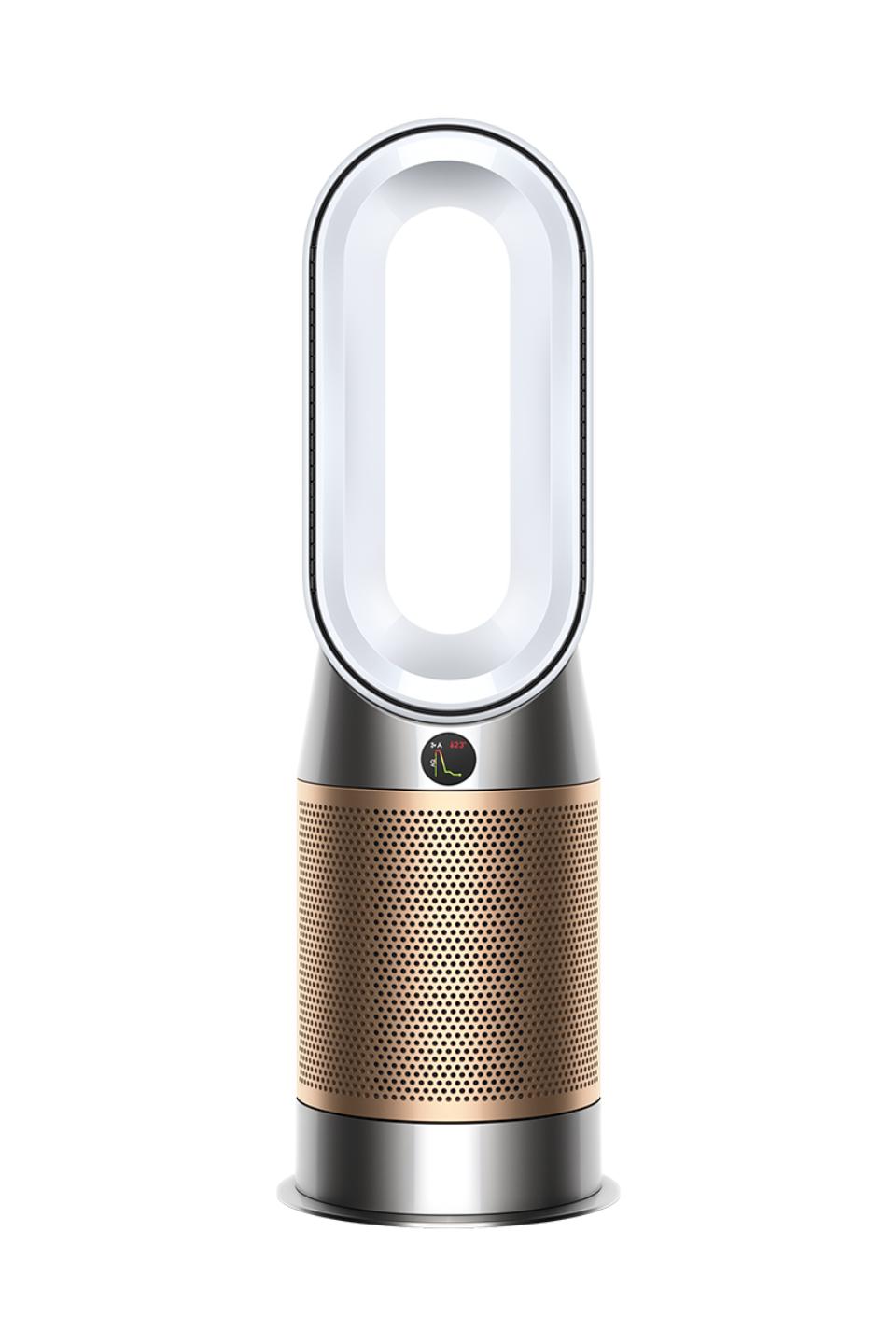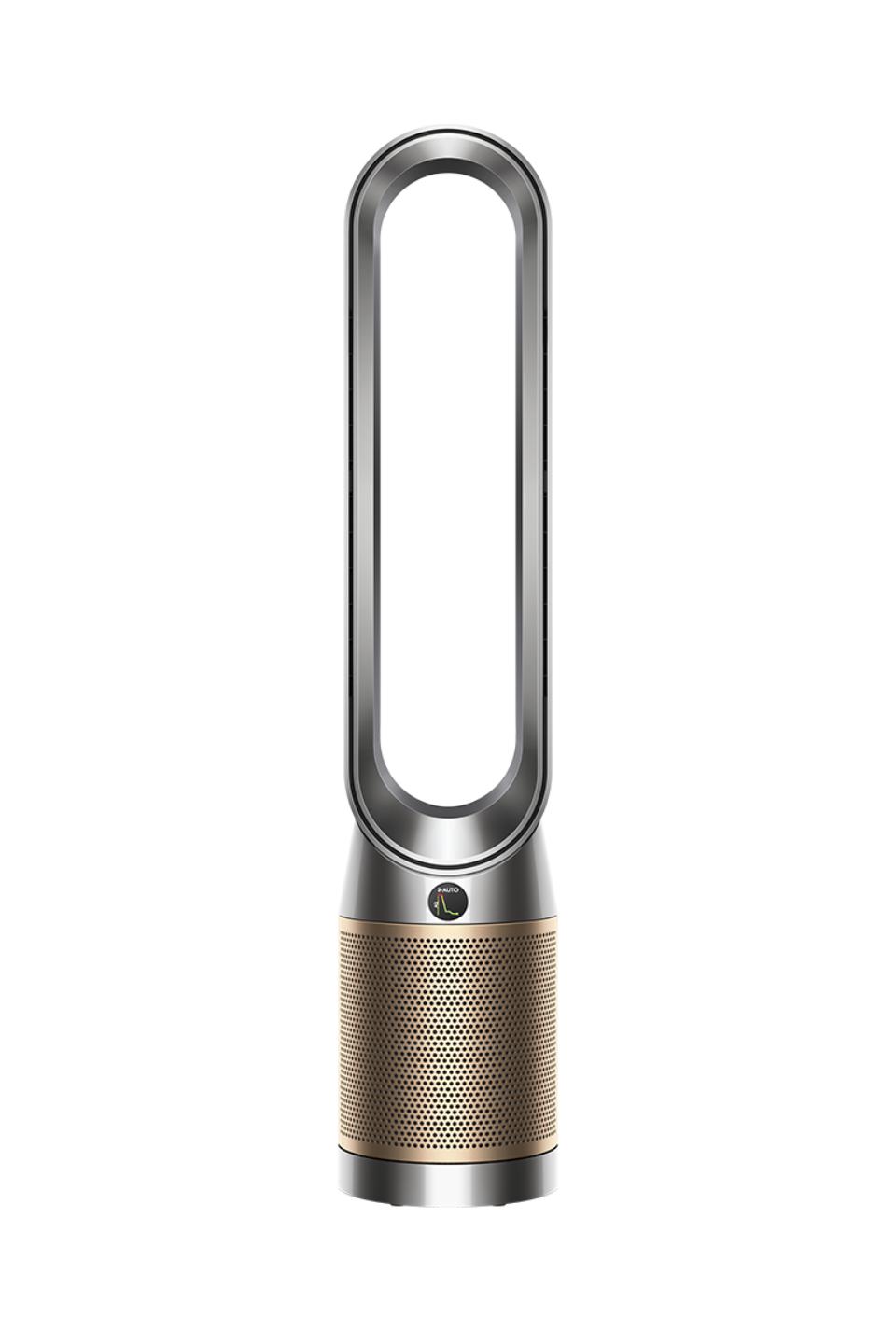Dyson Purifier Cool purifying fan (Black/Nickel)
-
( 6 Reviews )Rated 4.83 out of 5 based on 6 customer ratings06
Automatically senses, captures, and traps pollutants for cleaner air. Purifies the whole room¹ and cools you. Dyson 2-year warranty.
-
Dyson Purifier Hot+Cool Formaldehyde purifying fan heater (White/Gold)
Rated 4.80 out of 505Dyson Purifier Hot+Cool Formaldehyde purifying fan heater (White/Gold)
Rated 4.80 out of 505 -
Dyson Purifier Cool Formaldehyde purifying fan TP09 (Nickel/Gold) | Dyson
Rated 5.00 out of 507Dyson Purifier Cool Formaldehyde purifying fan TP09 (Nickel/Gold) | Dyson
Rated 5.00 out of 507
Re-engineered to deliver 50% cleaner air*
Dyson’s latest purifiers combine intelligent sensing with an advanced filtration system. An activated carbon filter removes gases and odors and a HEPA filter captures 99.97% of particles 0.3 microns in size. And Dyson purifiers have powerful Air Multiplier™ technology to purify the whole room.¹
Average Rating
4.83
Rated 4.83 out of 5 based on 6 customer ratings
065 Star
83.33%
4 Star
16.67%
3 Star
0%
2 Star
0%
1 Star
0%
Submit your review Cancel reply






by Johnny
Cleaner, thinner air, and waking up in the mornings with hardly any crud in my eyes compared to before. I also know that it works because it turns on when in auto after I puff the vape pen.
by Adam
The new Dyson Purifier Cool TP07 is an awesome machine. Extremely efficient and quieter than my previous Dyson Purifier. It integrates with my iPhone extremely well and can control it from anywhere. The HEPA filter is key especially in these COVID times and getting all the bad pollutants out of the air. Love the machine and all its improved functionality and reporting.
by Luko
I’ve been a fan of Dyson products for a long time because of their focus on the latest and most advanced technology, all of which makes our lives better.
The Dyson Purifier Cool uses such impressive technology. My first impression when I unpacked the box was of a beautifully created purifier, well designed as well as technologically advanced. When I plugged it in, I was even more impressed. It not only cleans the air, it also makes a cooling breeze all around. You can set it in any direction or put it on automatic mode. The air has a nice, fresh breeze. It wasn’t long before I could really tell a difference in the air quality of the room it was in compared to other rooms in the house.
Its sensors with algorithms precisely monitor the air around you. It has a gas sensor which uses laser technology to detect oxidizing gases, VOCs, O2 levels, and PM2.5 and PM10 levels (pollen levels). In addition, it has temperature, humidity, and particle sensors. The purifier can be set for a 24-hour review of air quality and gives a report in real time of the quality of air in your home.
Its air multiplier technology generates a powerful circulation that draws remote pollutants into the machine. Then the filter, which consists of an activated carbon layer, results in advanced air purification and odor removal. The air escalates at 350 degrees, and the strong circulation reaches and clears the air all around your room. It sends a pure breeze of fresh air free of odor, pollutants, dander, bacteria, allergens, and dust.
I give the purifier my highest recommendation. It really is an amazing machine. And it’s beautifully designed.
Everyone must have this newest advanced air purifier especially in times like these when people are spending much more time in their homes.
by Terhi
This Dyson saved my life, I have terrible allergies, between eye drops, nose spray, humidifiers, purifiers, I try to head off allergies or else they’ll kill me!
I was at home recovering from surgery when this came 6 minutes after plugging the Dyson purifier cool in I was able to breathe like a normal person again. My nostrils were clogged no matter what I did and no matter what my Dr prescribed! The purifier cleared the air in my home, it took all the pet dander (we have a pug) out. Remember we had 2 other purifiers and none of them worked regardless of us buying/changing filters, washing washable parts, none of them worked well enough to unclog my sinuses. We have since plugged them out, we now know they’re useless. The cooling fan is also amazing, I use it instead on the air conditioner at night to help me sleep comfortably. I have stop using the allergy meds, they make me feel weird anyway. Thank you Dyson purifier cool.
by Jung
Very easy to set up right out of the box – everything was so straight forward I did not have to read any manuals. 350 degree rotation is very impressive and does well with circulating air within a large living room. Side vents are interesting, though I’m not too sure when I would need such a feature.
The screen is not necessarily the most helpful or the most nicely integrated into the overall design of the device, but it does provide enough info that I don’t have to open an app to see what’s up.
by Omaha
I received my new fan just about a week ago. I was somewhat worried on how this fan would do in my bedroom and whether it would be a suitable replacement for my hot+cool (I rarely used the heating feature as the bedroom is a minimally ventilated attic room). I was a little skeptical about the size of the machine in comparison as well as the noise it might make being that it is so much larger.
When I opened the box, everything was laid out neatly and on par with a typical Dyson product. I was actually surprised to see how thin the base of the unit was and how “not giant” the machine felt (in a good way). When I pulled it out of the box, I first locked the filters in place which was super easy. They seemed to just click in regardless of what orientation they were in.
I got the machine plugged in and connected to my phone via WiFi. That process was very simple as well. The application is pretty user friendly. I messed around for a bit and found the oscillate feature to be pretty cool. You can point the fan in a specific direction or choose a variety of ranges all the way up to 350 degrees. I noticed the fan moved very smoothly without noise like some of my previous fans which made it nice when trying to fall asleep.
Sleep mode was definitely a frequently used feature on my previous fan. I was excited to see this machine had it as well (especially with the illuminated/colored screen). I initially was concerned because it still lit up with a picture of the moon but that disappeared as soon as the lights went off (coincidence maybe?). Regardless, it worked perfectly as well.
Like any fan, there is some noise that increases with the amount of air you are moving. I found this fan to be equal or less than in sound when compared to my hot+cool at the same levels. However, I do think this fan moves more air (or at least it feels that way), so a lower level felt equivalent to me.
The fan measures and reports numerous problematic air conditions like VOCs, NO2, etc. This was definitely an upgrade from the previous device I used which didn’t report those specifically. The TP07 actually illustrates the levels on the device itself. This is really cool but I foresee myself utilizing the app for this detail.
The device has a new method of pushing air out backwards so that it continues to filter without blowing into the room. There is a tract that runs mid housing to accomplish this. When I engaged this feature, the device made a mechanical sound so that it could redirect the air through those alternative channels. While it most likely would be fine, it did make me wonder about the longevity of the product if that were to be enacted frequently. The 2 year warranty should cover something like that I would think. I personally have not found a need to utilize this feature yet but it is definitely intriguing and may be used in the future.
Overall, I am pleased with the smooth air flow and oscillation feature. The device looks great in my room and is definitely not as big and clunky as I originally had thought. The filtration system is really easy to replace when needed and it is very cool to be able to see the air quality in your home through the app. I have been looking forward to using the fan in the evenings and throughout the night. I would definitely consider purchasing a second one of these fans if the need arose for some of the other rooms in my home.